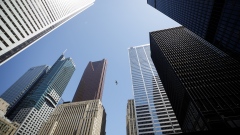May 28, 2024
Brazil Consumer Prices Rise Less Than Forecast
, Bloomberg News

(Bloomberg) -- Brazil’s annual inflation eased more than expected in early May, adding to economists’ expectations that policymakers have enough wiggle room to cut borrowing costs again in June before pausing their easing cycle.
Official data released Tuesday showed prices increased 3.7% in the first two weeks of the month from a year earlier, just below the 3.74% median estimate from analysts in a Bloomberg survey. Monthly inflation came in at 0.44%.
Swap rates on the contract due in January 2026, which are a gauge of market sentiment toward monetary policy at the end of next year, fell 12 basis points in morning trading following the slower-than-expected inflation print.
Economists and investors have grown pessimistic about the path of inflation in Brazil. Analysts raised their forecasts for the end of 2024, 2025 and 2026 further above the 3% target, according to a weekly central bank survey released Monday.
Still, today’s report “showed that seasonal food price shocks are easing and core inflation seemed to be somewhat better than many had feared,” said Dan Pan, an economist at Standard Chartered Bank. “The market has started to review the recent pessimism over Brazil’s inflation dynamics and the prospects for Brazil’s central bank to continue the rate cuts.”
Prices in early May were mostly driven by 1.07% gain in health and personal care products, as well as a 0.77% increase in transportation costs which was largely due to a rise in the price of gasoline. Meanwhile, household goods fell 0.44%, the statistics agency said.
Mounting global price pressures and a surprisingly resilient domestic job market have most analysts currently betting on another quarter-point interest rate cut in June before policymakers hit pause on their current easing cycle, with the benchmark Selic finishing the year at 10%.
Read More: Brazil Central Bank Chief Says Inflation Forecasts Will Improve
Policymakers are paying close attention to gauges of inflation that strip out more volatile items like as food and fuel. Economists noted that underlying readings of service prices, which have simmered in recent months, appeared to edge lower and could provide the central bank with more space to maneuver when it convenes to set interest rates next month.
Central bank chief Roberto Campos Neto said Monday that consumer price forecasts will improve as the “recent noise” dies down. But while board members have emphasized their commitment to hitting the bank’s 3% goal, a split-decision on the size of their last rate cut led to concerns that the institution could become more tolerant of inflation under President Luiz Inacio Lula da Silva.
The leftist leader has clashed with Campos Neto, complaining that he is causing too much economic pain in his efforts to cool down prices. So far, the central bank has lowered the Selic by 3.25 percentage points since it began its easing campaign in August.
--With assistance from Giovanna Serafim and Josue Leonel.
(Recasts lead, adds inflation details, context and analysis throughout.)
©2024 Bloomberg L.P.







